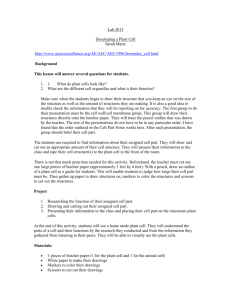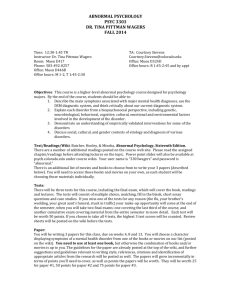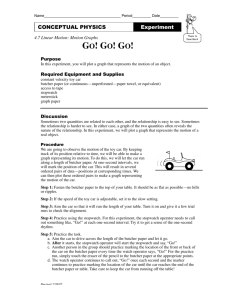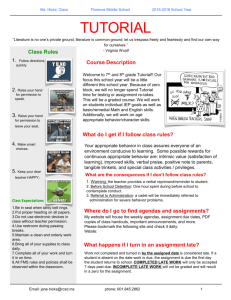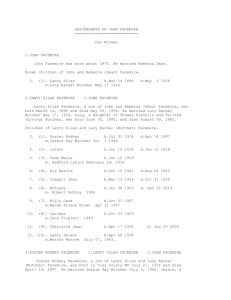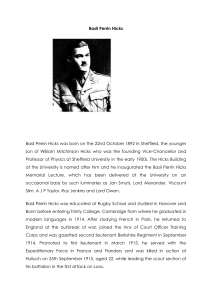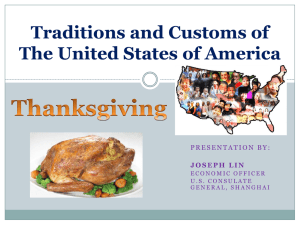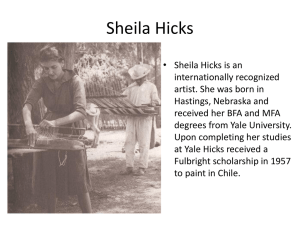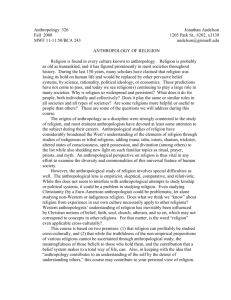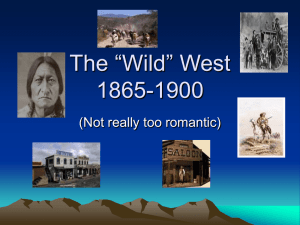For the Record - Humanities Nebraska
advertisement
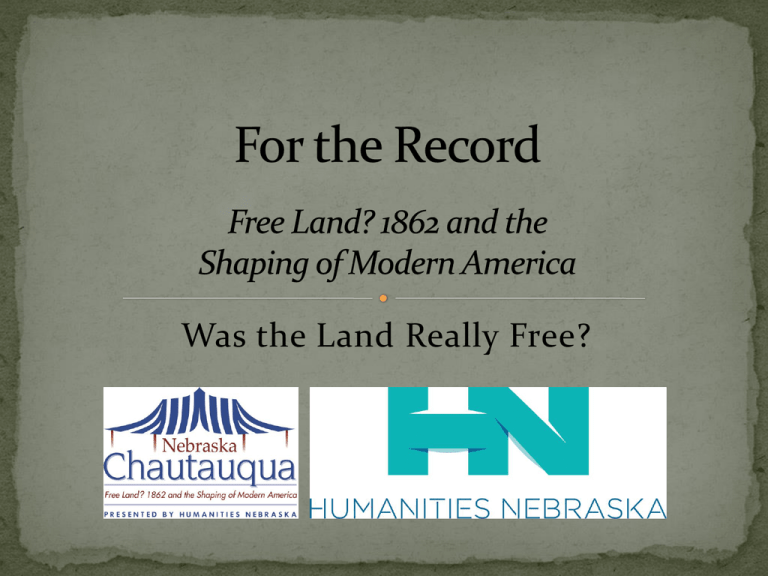
Was the Land Really Free? The Age of Exploration came after the Middle Ages and at beginning of the Renaissance. Many different European countries paid for explorations for different reasons. Some of the reasons they explored were: To find a sea route to the spices of Asia To find gold, silver, and precious stones To expand their knowledge of the world To control a larger empire To expand Christianity To find animal fur When you look at the previous image what issues come to mind both for and against Western European exploration? William Henry Powell’s dramatic and brilliantly colored canvas was the last of the eight large historical paintings in the Rotunda commissioned by the Congress. It shows Spanish conquistador and explorer Hernando De Soto (1500–1542), riding a white horse and dressed in Renaissance finery, arriving at the Mississippi River at a point below Natchez on May 8, 1541. De Soto was the first European documented to have seen the river. http://www.aoc.gov/capitol-hill/historic-rotunda-paintings/discoverymississippi-by-de-soto What form /medium can public records take? Are there different mediums from different times? Who made records of the original inhabitants of the “New World”, what did they record and what was the method of the record? From whose point of view are the records? Describe the Native American’s view of landownership and how it varied from the European immigrants? Standing Bear, born in 1839, was a Ponca Native American chief who successfully argued in U.S. District Court in 1879 in Omaha that Native Americans are "persons within the meaning of the law" and have the right of habeas corpus. *Chief Standing Bear is a historical figure portrayed in the “Free Land” Chautauqua. In 1832 Karl Bodmer accompanied German Prince Maximilian on his tour of America. Today Bodmer’s paintings and Maximilian’s journal give valuable information to Native Americans whose ancestors inhabited the shores of the Missouri River. Karl Bodmer painted this image nine years before Chief Standing Bear’s birth. http://montanatrails.com/ArtworkImages/BodmerInterior.jpg The Last Race Mandan O-Kee-Pa Ceremony White Cloud, Head Chief of the Iowas 1844-1845 http://www.firstpeople.us/pictures/art/odd-sizes/ls/The-Last-Race-Mandan-O-kee-pa-Ceremony-1000x830.html Pilgrims vs. Homesteaders Compare the motivation of the Pilgrims and the Homesteaders for acquiring “Free Land”. What records were kept to validate ownership? What were the ramifications of changes in ownership of land from Natives Americans to immigrants and from the government to citizens? Explore the concept: Who is to blame for the displacement of the Native Americans? Were the pilgrims or homesteaders responsible? Were their motives pure? Did Europeans in general assume the land was free? Pilgrims http://www.richmondancestry.org/pilgrim.shtml http://xroads.virginia.edu/~cap/puritan/purhist.html Homesteadhttp://www.archives.gov/education/lesson s/homestead-act/ How did the Native Americans’ view of landownership encourage the concept of Free Land? Edward Hicks was born in Pennsylvania in 1780. His mother died when he was 18 months old, and his father, a British loyalist, was forced to flee in the aftermath of the Revolutionary War. Family friends took in the abandoned child and gave him religious instruction; from this early time, religion became central to his life. At age thirteen Hicks was apprenticed to a coach maker and spent the next seven years learning to make and paint coaches. Hicks was soon recognized as a minister and, like other Quakers, began to travel thousands of miles to spread the word, uncompensated in any material way. Eventually he established himself in Milford, Pennsylvania, where he painted coaches, signs and decorated household objects. By 1820 he had begun easel painting, and scenes based on the biblically inspired theme of “The Peaceable Kingdom" became his specialty. Hicks continued to travel and preach and to paint until his death in 1849. He also painted the homes of friends as a record of what they had accomplished for the next generations and included historical references in his works. http://www.phillipscollection.org/research/american_art/bios/hicks-bio.htm Nebraska photographer Solomon D. Butcher produced, over the course of nearly forty years, a record of the settlement of the Great Plains that is both unique and remarkable. Born in 1856 in what was to become the state of West Virginia after the Civil War, Butcher came with his family to the plains of Nebraska in 1880. This restless young man soon found that he was not up to the rigors of a homesteader's life. He had tasted just enough of it, however, to develop a profound admiration for those with the grit to survive and prosper on the Nebraska prairies. In 1886 Butcher was struck with an idea that was inspired. Realizing that the period of settlement would soon be over, he set out to create a photographic history of pioneer life. Between 1886 and 1912 Butcher generated a collection of more than 3,000 photographs. Though he died in 1927 believing himself a total failure, Solomon D. Butcher's work has survived to become the most important chronicle of the saga of homesteading in America. http://nebraskahistory.org/lib-arch/research/photos/highlite/butcher/bio.htm Compare images of various private residences from American Folk Artist Edward Hicks and photographer Solomon Butcher. How are they similar? What was the purpose of these images? Looking at the images what can you learn about the people in the images? Does anything seem out of place? The Cornell Farm 1848 The Residence of David Twining, 1848 Rawding Homestead Sylvester David Hilton Homestead, Custer County The Shores Family Edward Hicks and Solomon Butcher would be surprised that their images are still being viewed. As you compare their work on the consider the following questions: • Why are these images iconic? • Are they iconic because they represent the life on the plains and in the United States, or just because they are the only images we have? • What make some photos, buildings or paintings iconic? What were the results of the Age of Exploration, Homestead Act, the Pacific Railway Act, and the Morrill Act on the European Immigrants and the Native People? What new opportunities were available as a result of the 1862 legislation? Who benefited? What “costs” were involved? What is our responsibility today? If you were going to make a record of what you, your family or your community has accomplished for future generations what form would that record take? What information would you include and how would you ensure that it would last for generations? Make a record of you, your family or your community. (Below are some suggestions but there is no one right or wrong way to complete this task.) Digital/photographic images (share them on Instagram or Twitter with the hashtags #NEChautauqua or #NEFreeLand) Video images Do a painting or drawing or use some visual arts medium Keep a scrapbook A journal or other sort of written record Share your “records” with us! – info@HumanitiesNebraska.org
